Welcome to our article on cybersecurity threats in the age of remote work. As more and more people work remotely, online security has become a pressing concern for individuals and organizations alike. With the rise of cyber threats targeting remote workers, it’s essential to take proactive measures to safeguard against potential attacks. In this article, we will explore the specific challenges and risks associated with remote work environments and share best practices for protecting yourself and your organization from cyber threats.
Key Takeaways:
- Remote work presents unique cybersecurity challenges that require proactive measures to mitigate potential risks.
- Protecting remote workers from cyber threats requires a multi-faceted approach that includes secure devices, strong passwords, and regular training and awareness initiatives.
- Data breaches can have severe financial and reputational consequences, making it essential to implement robust security policies and procedures.
Understanding Remote Work Cybersecurity Threats
In today’s digital age, remote work has become a necessity for many organizations. While it offers flexibility and convenience, it also poses significant cybersecurity risks. As more and more employees work from home, cybercriminals are finding new ways to exploit vulnerabilities in remote work environments. In this section, we will discuss the specific cybersecurity threats that remote workers face and provide tips on protecting remote workers from cyber threats.
Remote work cybersecurity threats:
| Threat | Description |
|---|---|
| Phishing | Cybercriminals use social engineering tactics to trick remote workers into divulging sensitive information or clicking on malicious links or attachments. |
| Malware | Cybercriminals use various types of malware, such as ransomware or spyware, to steal data or take control of remote work devices. |
| Unsecured Networks | Cybercriminals can intercept data transmitted over unsecured networks, such as public Wi-Fi, to steal sensitive information. |
| Insider Threats | Remote workers with access to sensitive data may misuse it, intentionally or unintentionally, or fall prey to social engineering tactics by cybercriminals. |
Protecting remote workers from cyber threats requires a multi-layered approach that includes implementing robust security protocols, regular awareness training, and proactive monitoring and incident response planning. In the next section, we will discuss the importance of cybersecurity for remote work.

Importance of Cybersecurity for Remote Work
As remote work becomes increasingly common, it is essential to prioritize cybersecurity for remote workers. The shift to work from home has created new security risks that organizations must address to protect both their data and their employees. Any cyber attack can have significant financial and reputational consequences for both the organization and the individual employee.
Remote work security risks can arise through various means, including unsecured home networks, personal devices, and lack of access controls. Cybercriminals can use phishing, malware, and other attack vectors to exploit weaknesses and gain access to sensitive information.
Protecting remote workers from cyber threats requires proactive measures and constant vigilance. Organizations must implement security policies, guidelines, and training to ensure that all employees are aware of the potential risks and how to prevent them. Employers must also provide support systems in place to ensure that their remote workers have the resources necessary to maintain their cybersecurity.
Therefore, we must prioritize cybersecurity for remote work to protect our data, our employees, and our organizations from cyber threats.

At the same time, employees must also play an active role in maintaining their cybersecurity. They should follow best practices such as regularly updating their software, using strong passwords, and avoiding suspicious emails or links. Remote workers should also be aware of the potential threats and report any suspicious activity immediately to their IT department.
By prioritizing cybersecurity for remote work, we can reduce the risks and safeguard our organizations and employees in the digital age.
Best Practices for Securing Remote Work Devices
Securing remote work devices is crucial for protecting sensitive data and preventing cyber attacks. With the increased prevalence of remote work, it is essential to implement best practices for cyber protection that address the unique security risks associated with remote work. Here are some recommendations to secure remote work devices:
Use Strong Passwords
Weak passwords are one of the easiest ways for cybercriminals to gain access to sensitive data. Encourage remote workers to use strong passwords that include a combination of upper and lower case letters, numbers, and special characters. Additionally, remote workers should avoid using the same password for multiple accounts and change passwords frequently.
Keep Software Up-to-Date
Outdated software can leave remote devices vulnerable to cyber threats. Ensure that remote workers keep their operating systems, applications, and antivirus software up-to-date to minimize security risks. Regular software updates often include security patches that address known vulnerabilities.
Encrypt Communications
Encrypting communications is essential for safeguarding sensitive information from prying eyes. Encourage remote workers to use encrypted communication channels such as virtual private networks (VPNs) and secure messaging apps to prevent unauthorized access to sensitive data and communications.
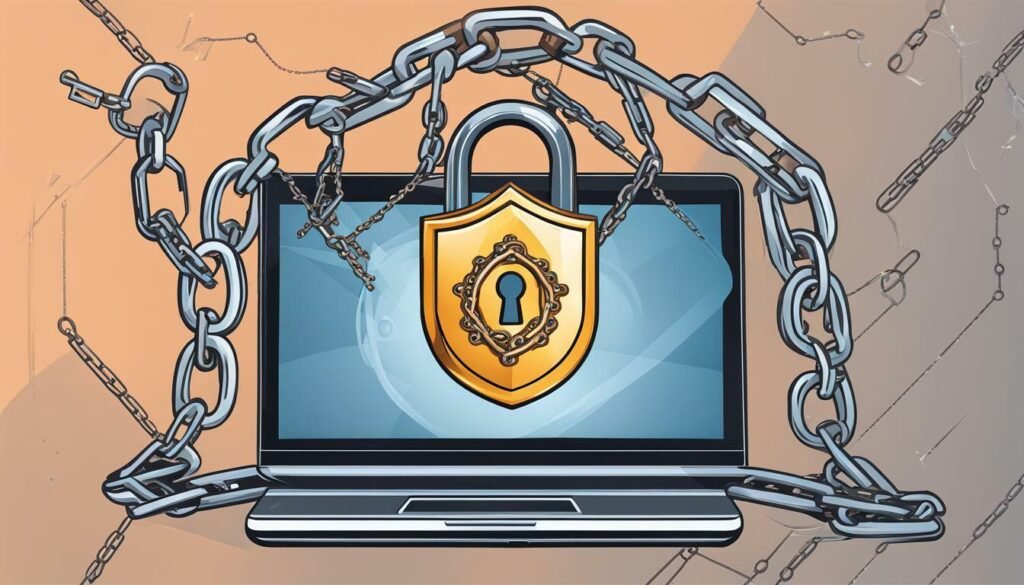
Secure Home Networks
Remote workers should secure their home networks to prevent unauthorized access to their devices and sensitive data. Encourage remote workers to change the default passwords and use strong Wi-Fi encryption protocols, such as WPA2 or WPA3, to protect their networks from cyber threats.
Use Endpoint Security Solutions
Endpoint security solutions provide an additional layer of protection for remote work devices. These solutions can include antivirus software, firewalls, and intrusion detection systems that monitor and block potential cyber threats. Ensure that remote workers have endpoint security solutions installed on their devices and that they are up-to-date.
Enable Multi-Factor Authentication
Multi-factor authentication adds an extra layer of security to remote work devices by requiring users to provide additional forms of verification such as a fingerprint or a code sent to their mobile device. Encourage remote workers to use multi-factor authentication wherever possible to prevent unauthorized access to their accounts and data.
Implementing these best practices for securing remote work devices can help protect remote workers from cyber threats and safeguard sensitive data. However, it is important to remember that cybersecurity risks are constantly evolving, and it is crucial to stay up-to-date on the latest security trends and threats to ensure adequate protection.
Educating Remote Workers on Cybersecurity
Protecting remote workers from cyber threats requires a concerted effort from both employers and employees. While employers can implement security policies and provide the necessary tools, it is equally important for remote workers to be aware of cyber risks and know how to prevent and report potential threats.
Remote work cybersecurity threats can take many forms, from phishing emails and malware to social engineering tactics and unsecured home networks. Educating remote workers on these risks and providing regular training updates is essential for maintaining a strong security posture.
- Recognizing and Reporting: Remote workers should be aware of the signs of a potential cyber attack, including suspicious emails, pop-ups, and unusual network activity. Reporting any suspicious incidents to the IT department immediately can help prevent further damage.
- Regular Security Updates: Keeping security software up to date is essential for protecting remote work devices from the latest cyber threats. Remote workers should be advised to install updates as soon as they become available.
- Creating Strong Passwords: Weak passwords are a major cybersecurity vulnerability. Remote workers should be encouraged to create complex passwords and avoid reusing them across multiple accounts.
By educating remote workers on cybersecurity best practices, organizations can create a culture of security awareness that benefits everyone. Regular security reminders, training sessions, and online resources can help remote workers stay safe online and protect sensitive company data.
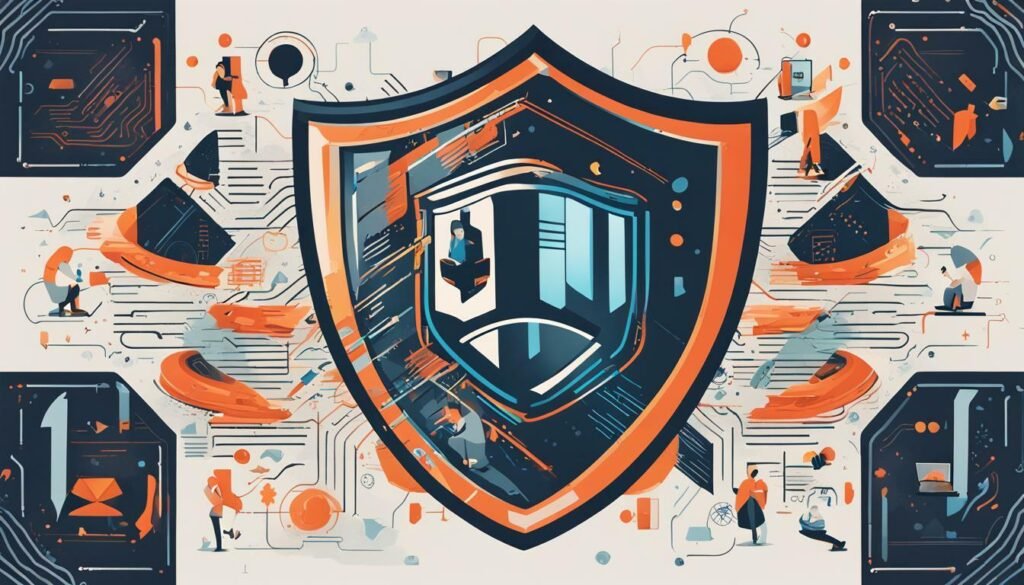
Mitigating Cyber Risks in Remote Work Environments
As remote work continues to gain popularity, the risks associated with cyber threats are also increasing. Protecting remote workers from cyber threats is crucial to maintain productivity and ensure the safety of sensitive data. In this section, we will explore strategies for mitigating cyber risks in remote work environments.
Implement Multi-Factor Authentication
One of the most effective ways to mitigate cyber risks in remote work environments is by implementing multi-factor authentication (MFA). MFA requires users to provide two or more forms of identification to access an account, making it significantly more difficult for hackers to gain unauthorized access.
By implementing MFA, remote workers can provide an additional layer of security to their accounts and devices, even if their passwords are compromised. This security measure can help prevent unauthorized access to sensitive data and reduce the risk of cyber attacks.
Use Endpoint Security Solutions
Endpoint security solutions can help protect remote work devices from malware, phishing attacks, and other cyber threats. These solutions typically include anti-virus software, firewalls, and intrusion detection systems.
By using endpoint security solutions, remote workers can ensure that their devices are protected against the latest cyber threats. This can help prevent data breaches and other security incidents that can disrupt productivity and compromise sensitive information.
Regularly Back Up Data
Regular data backups are essential for protecting remote work environments from cyber threats. Backing up data ensures that important information is not lost in the event of a cyber attack, natural disaster, or other unforeseen circumstances.
Remote workers should establish a regular backup schedule and ensure that backups are stored securely in an offsite location. This can help ensure that critical data is always available in the event of an unexpected incident.
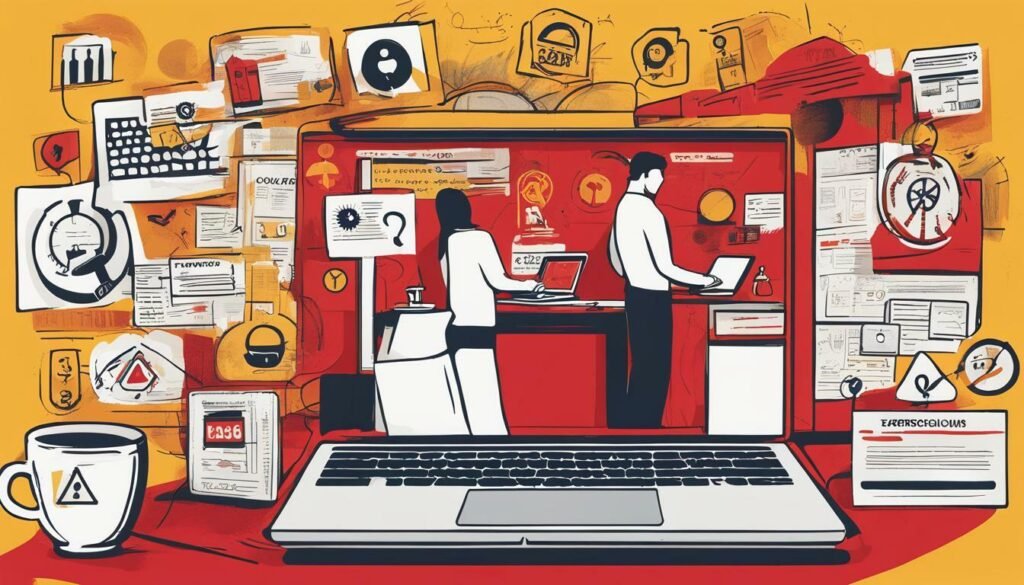
Protecting remote workers from cyber threats requires a proactive approach that includes strong security policies, regular training, and ongoing monitoring. By implementing these strategies, remote workers can reduce the risk of cyber attacks and safeguard their work environments.
Addressing Data Breach Concerns in Remote Work
Remote work environments are particularly vulnerable to cyber attacks, including data breaches, which can result in devastating consequences for individuals and organizations alike. As remote work becomes increasingly prevalent, it is critical to take steps to protect remote workers from cyber threats.
Understanding Cyber Attacks on Remote Workers
Cyber attacks on remote workers can take many forms, with data breaches being one of the most common. Data breaches involve the unauthorized access of sensitive information, such as personal or financial data, by cybercriminals. Remote workers are often targeted because they may be less likely to have the same level of security protections as those working in a traditional office setting.
Data breaches can have significant financial and reputational consequences for organizations, as well as cause personal harm to individuals whose data has been compromised. Cybercriminals may use stolen information for identity theft, fraud, or other malicious purposes.
Preventing and Responding to Data Breaches
Preventing data breaches in remote work environments requires a multi-faceted approach that includes employee education, data encryption, and access controls. It is also essential to have an incident response plan in place to quickly and effectively respond to data breaches when they occur.
Employee education is critical in preventing data breaches. Remote workers must be trained to recognize potential threats, avoid phishing emails, and use secure communication methods. Regular security updates and reminders can also help remote workers stay vigilant against cyber threats.
Encryption is another critical aspect of data breach prevention. Data should be encrypted both in transit and at rest, meaning that it is protected while being transmitted between devices and while stored on devices. Access controls are also important, allowing only authorized individuals to access sensitive data.
In the event of a data breach, it is critical to have an incident response plan in place that outlines the steps to be taken to mitigate the damage. This plan should include steps such as disconnecting affected devices from the network, conducting an investigation, and notifying affected individuals or organizations.
Conclusion: Protecting Against Data Breaches in Remote Work
Protecting against data breaches in remote work environments requires a proactive and multi-faceted approach that includes employee education, data encryption, and access controls. It is also important to have an incident response plan in place to quickly and effectively respond to data breaches when they occur. By taking these steps, remote workers and organizations can safeguard against cyber threats and protect sensitive information from falling into the wrong hands.
![]()
Balancing Productivity and Security in Remote Work
As we have discussed in earlier sections, remote work has brought about new cybersecurity threats and risks. However, it is important to note that productivity is another key concern for remote workers and their employers. Remote workers often have to balance multiple tasks, and their work environments can be full of distractions. In this section, we will discuss best practices for balancing productivity and security in remote work.
First and foremost, it is essential to establish clear policies and guidelines that promote both productivity and cybersecurity. This includes defining working hours, setting goals and deadlines, and encouraging regular breaks to avoid burnout. By providing clear expectations and guidelines, employers can help remote workers stay on track and be more productive.
At the same time, employers must ensure that these policies and guidelines also address cybersecurity concerns. Encouraging the use of secure communication channels and providing regular security updates and reminders can help protect remote workers from cyber threats while minimizing interruptions to their work.
Another key aspect of balancing productivity and security in remote work is fostering a culture of security awareness and collaboration among remote teams. This includes providing regular training on cybersecurity best practices, encouraging employees to report potential threats, and promoting a sense of accountability among all team members.
Finally, it is important to remember that productivity and security are not mutually exclusive. In fact, by prioritizing cybersecurity, employers can actually enhance their overall productivity. By preventing cyber attacks and minimizing interruptions, remote workers can focus better on their tasks and achieve more in less time.
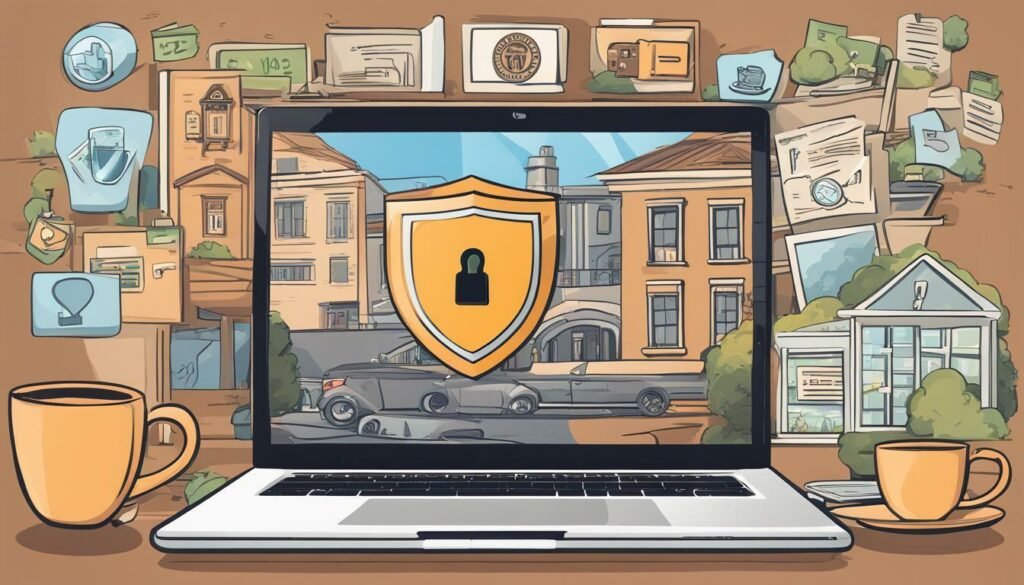
By following the best practices outlined in this section, remote workers and their employers can achieve a balance between productivity and security in the digital age. It is essential to stay vigilant and adapt to evolving cyber threats, but with the right strategies in place, remote work can be both productive and secure.
Future Trends in Remote Work Security
As remote work continues to become the norm, it’s crucial to stay ahead of evolving cybersecurity threats. Here are some future trends in remote work security:
- Increased use of artificial intelligence (AI) and machine learning (ML) to detect and respond to cyber threats: AI and ML can be used to analyze large amounts of data and recognize patterns, allowing for the quick identification of potential threats. This can help remote workers stay one step ahead of cyber attackers.
- More widespread use of biometric authentication: Passwords can be easily compromised, making biometric authentication (such as fingerprint or facial recognition) an attractive alternative. This can provide a more secure method of identity verification for remote workers.
- Greater adoption of zero trust security: Zero trust security operates under the assumption that nothing inside or outside of the network should be trusted, and requires continuous authentication and authorization. This can help protect remote workers from unauthorized access to sensitive information.
By staying informed about these and other emerging trends, remote workers can better protect themselves from cyber threats.

“As remote work continues to become the norm, it’s crucial to stay ahead of evolving cybersecurity threats.”
The Role of Employers in Remote Work Cybersecurity
In today’s digital world, remote work has become a necessity for many businesses. However, with the rise of remote work, there has also been an increase in cyber threats targeting remote workers. Employers have a crucial role to play in protecting their remote workforce from these threats. Here are some best practices for employers to follow:
Establish Robust Security Policies
Employers should create and enforce strong security policies for remote workers. These policies should include guidelines for securing devices, accessing company data, and reporting security incidents. It is also important to regularly review and update these policies to keep pace with changing cybersecurity risks.
Conduct Regular Audits
Employers should conduct regular audits to ensure that remote workers are following security policies and best practices. These audits can identify potential vulnerabilities and help prevent cyber attacks. Regular audits also provide an opportunity to provide additional training and support to remote workers.
Provide Employee Support Systems
Employers should provide remote workers with access to IT support and resources to help them stay safe online. This can include tools for securely accessing company data, training on how to recognize and report phishing attempts, and access to a help desk for technical support.
Foster a Culture of Cybersecurity Awareness
Finally, it is important for employers to foster a culture of cybersecurity awareness and accountability within their organization. This can be achieved through regular training, reminders, and incentives for employees who follow best practices. Employers should also establish a clear chain of responsibility for cybersecurity, so that everyone is aware of their role in protecting company data and systems.
By implementing these best practices, employers can help protect their remote workforce from cyber threats and safeguard their business from potential financial and reputational damage. Protecting remote workers from cyber threats and establishing a culture of cybersecurity is essential in the digital age.
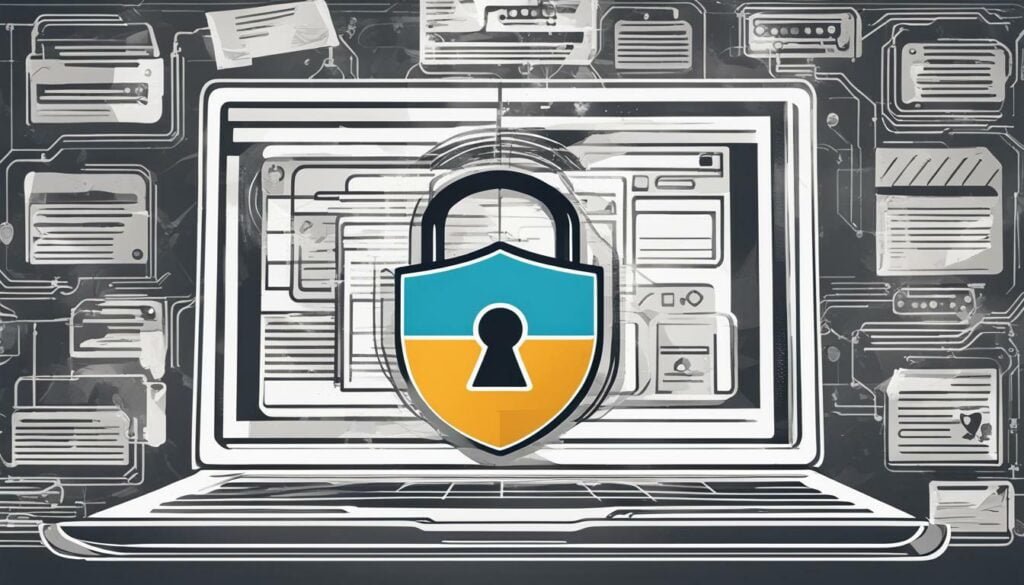
Conclusion: Safeguarding Remote Work in the Digital Age
In today’s world, remote work has become an integral part of the modern workplace. However, with this new way of working comes a new set of challenges, particularly in terms of cybersecurity. The rise of remote work cybersecurity threats has made it more critical than ever to stay safe online.
Throughout this article, we have explored the various cyber threats in remote work environments, the importance of cybersecurity for remote work, and the best practices for securing remote work devices. We have also highlighted the need for educating remote workers on cybersecurity, mitigating cyber risks in remote work environments, and addressing data breach concerns. In addition, we have discussed the challenge of balancing productivity and security in remote work and future trends in remote work security.
As we wrap up this article, we want to emphasize the importance of prioritizing cybersecurity in the age of remote work. It is crucial to be proactive and take necessary steps to protect yourself and your organization from cyber threats. Maintaining strong passwords, regularly updating software, and using encrypted communications are just a few of the ways you can safeguard your remote work environment.
We encourage you to stay vigilant and stay informed about the latest cyber threats in remote work environments. By doing so, you can help protect yourself and your organization from potential cyber attacks and data breaches. With continued vigilance and adaptation, we can all work towards safeguarding remote work in the digital age.
FAQ
Q: What are common cybersecurity threats in remote work environments?
A: Common cybersecurity threats in remote work environments include phishing attacks, malware infections, and unauthorized access to sensitive data.
Q: Why is cybersecurity important for remote work?
A: Cybersecurity is important for remote work because a successful cyber attack can result in financial loss, reputation damage, and compromise of sensitive information.
Q: How can I secure my remote work devices?
A: To secure your remote work devices, you should use strong passwords, keep software updated, and utilize encrypted communication. Additionally, securing your home network and using a virtual private network (VPN) can enhance security.
Q: How can I educate myself and my remote workers about cybersecurity?
A: Educating remote workers about cybersecurity is crucial. This can be done through awareness training, regular security updates and reminders, and providing guidance on recognizing and reporting potential threats.
Q: What strategies can organizations use to mitigate cyber risks in remote work environments?
A: Organizations can mitigate cyber risks in remote work environments by implementing multi-factor authentication, endpoint security solutions, and regular data backups. Additionally, secure communication channels and monitoring systems are essential for early threat detection.
Q: How can I address data breach concerns in remote work?
A: To address data breach concerns in remote work scenarios, it is important to focus on data encryption, employee access controls, and incident response planning. These measures can help prevent and respond to data breaches effectively.
Q: How can I balance productivity and security in remote work?
A: Balancing productivity and security in remote work requires clear policies and guidelines that promote efficiency while considering cybersecurity. Creating a culture of security awareness and collaboration among remote teams is also crucial.
Q: What are future trends in remote work security?
A: Future trends in remote work security include emerging technologies and strategies to counter evolving cyber threats. Continuous training and adaptability will be essential in staying ahead of these threats.
Q: What is the role of employers in remote work cybersecurity?
A: Employers play a vital role in remote work cybersecurity. They should establish robust security policies, conduct regular audits, and provide employee support systems. Fostering a culture of cybersecurity awareness and accountability is also important.
Q: How can I safeguard remote work in the digital age?
A: Safeguarding remote work in the digital age requires prioritizing cybersecurity, ongoing vigilance, and continuous adaptation. Individuals and organizations must take proactive measures to ensure online safety and protect against evolving cyber threats.

